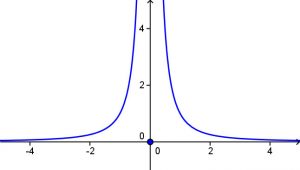Collapse/Fall (Upd: Dec 24, ’22)
Knowing how to fall is great conditioning for the body, but what causes us to fall in life? What resonates (or even spicier, what is the shadow) that so happens to cause you to fall? Once the qualia/image world is found, this is what does the falling.
“On falling into filth, there is only one thing for a man to do: just fall, without looking around. The important thing is just to do this with style and energy.” – Daniil Kharms¹
Falling Safety

When falling, always keep your awareness above your body. Think “up.” This will soften your movements. Fall as if the floor is more fragile than you. You can also fall utilizing the asymptotic curve. An asymptote is a vertical or horizontal curve but at the last moment approaches 0 but never gets there.
Rotational Fall
Turn leg medially then tuck behind the other leg while going down.
Cut String Fall
Whole Body Collapse
A string pulls your arm. You are suspended by only this string and your body is completely immobile. Then somebody cuts this string and your entire body collapses.
Cascading Collapse
The string is cut and your body collapses beginning from the fingertips and then trailing down to the floor. This effect is like dominoes, a chain reaction. To make it richer, we can embody a qualia such as a controlled demolition or as in Noguchi Taiso, the melting of an iceberg.
Partitioning
Divide your fall in half, then try in three, then more. Also try while utilizing exhalation. For instance, if you fall five times, expel the breath five times.
Slow Motion Fall
Model a slow motion fall out of one of your real time falls. The slower you can go the better. Ten minutes even. The most important thing to remember about the slow motion fall is the low level. It is much more difficult to sustain the lower you go. Keep in mind also that there is a moment of gold that happens inches from the ground. Do not lose your awareness even at the last millisecond. Sustain.
Drop/Collapse Body
In the YouTube butoh instructional video called Drop, Juju Alishina mentions the Japanese term okotsuki which means “a movement that expresses any number of qualities from high emotions or frustration, or confusion, or sex appeal or weakness.” She gives one example of somebody walking and suddenly losing their balance like a drunk person.6
One is to build the awareness of collapsing everything from the body all at once to different parts of the body. One can play around with the degree of passivity of the body.
Micro Falls
We can turn falls into tiny and subtle movement patterns. How is it like to fall only 1 cm? How is it to fall 50 times in order to reach the floor? When one reaches the floor, how is it to fall again and again beyond the floor?
Collapse/Falling Qualia Worlds for Butoh-fu:
- stack of cards collapse
- Drawing upon the inspiring work of Lakoff and his list of conceptual metaphors, one such metaphor not on his list is that of NEW LOVE IS A FALL. Source domain: falling; target domain: love. In this exercise, we can fall in love literally. Fall, as if love made you do it.
- egg splat
- Falls can be a sort of surrender. In Evangelical sermons, during holy spirit anointing services, people fall very impressively in surrender to the holy spirit.
- Melting can be viewed as a type of liquid collapse and can take on the worlds: (a) snow man in the sun; (b) candle; (c) ice cream.
Fall Across Space
“Charlie Chaplin staggering drunkenly across the street is acting ‘messy’ but with consummate skill—just as a clown performs a graceless pratfall gracefully.” – Richard Schechner²
This is an exercise of simply extending a fall across space. The lengthier the space, the better.
Contemporary Metaphor Theory
To Hedblam, et al, falling is composed of a merge between SOURCE-PATH-GOAL and VERTICALITY.³
Image schemas to Lakoff and Johnson are “recurrent patterns in perceptual-motor experience that derive from our bodily interaction with the physical world.”4 Like so many other image schemas, we are bombarded with this schema at all moments of our lives.
The verticality direction which is the image schema UP-DOWN5 is also geocentric since it pertains to the orientation of Earth. We can deterritorialize this form of up and down.
De/Reterritorialized Falls
Jumps and falls are commonly associated with the legs. To deterritorialize the legs, one can move the qualia of jump or fall into something other than the legs (reterritorialize to something else). What is it like for the eyes to jump or fall? The shoulder to jump or fall? The emotion to jump or fall? The eyes to jump or fall? Any qualia or channel can form resonance with jumps.

